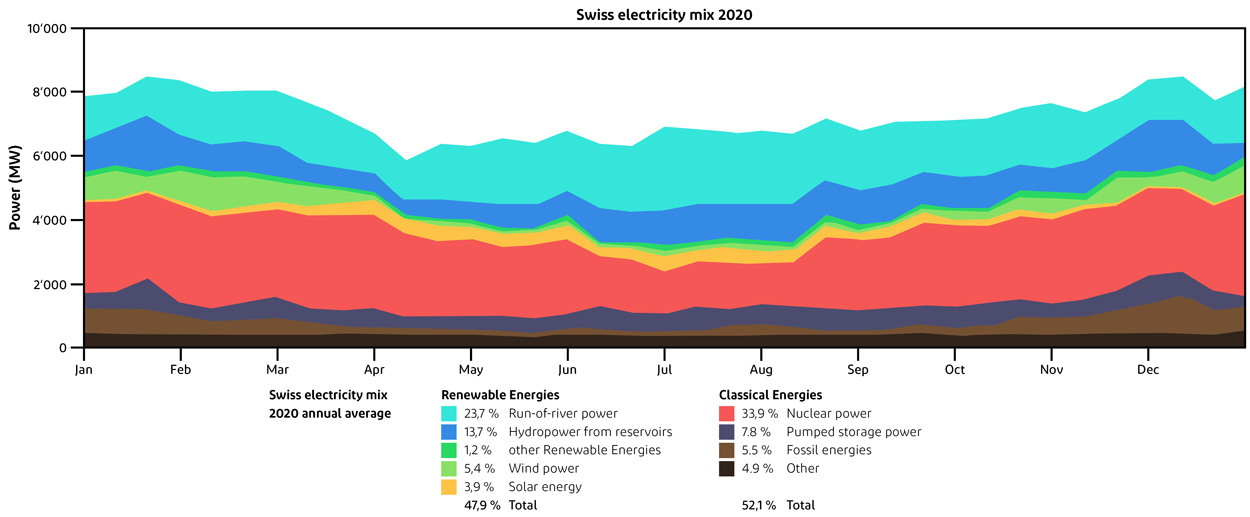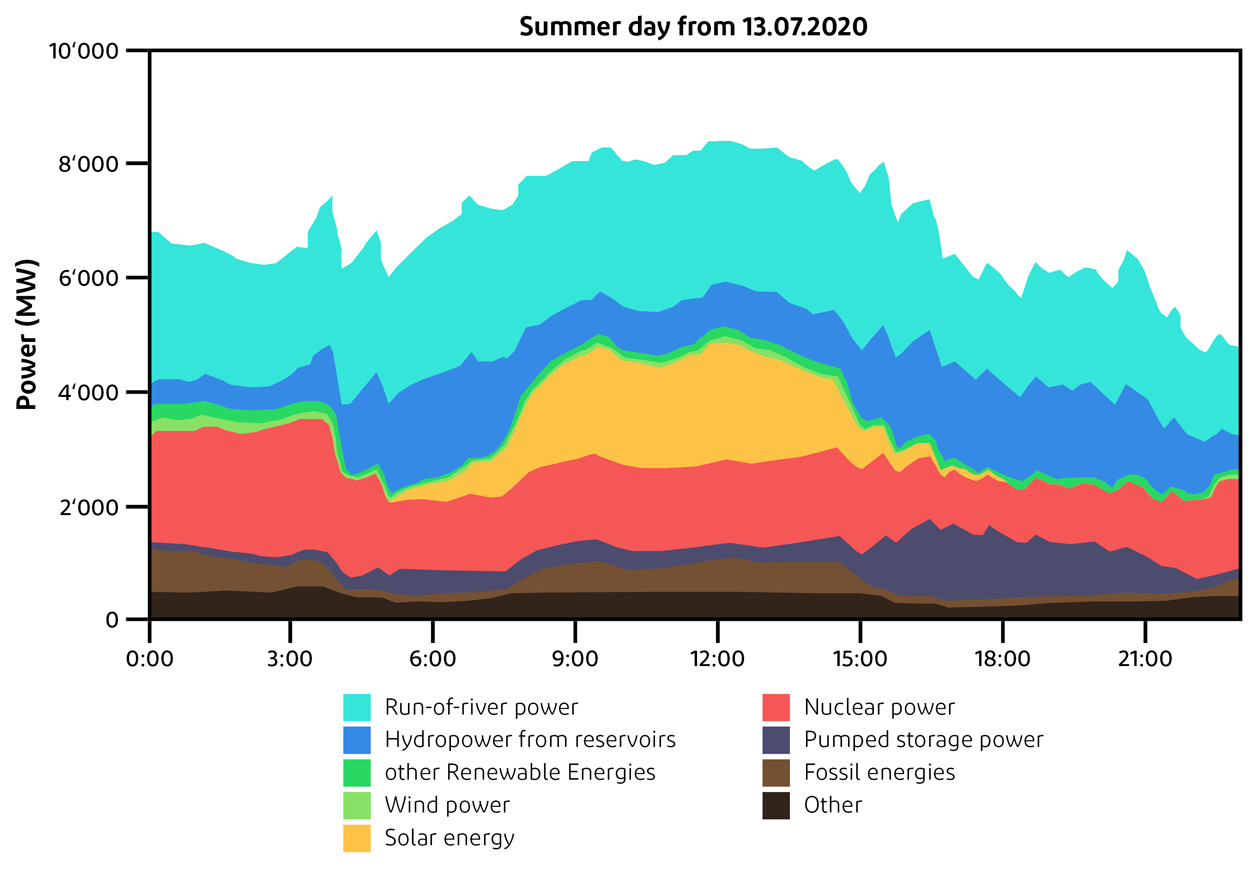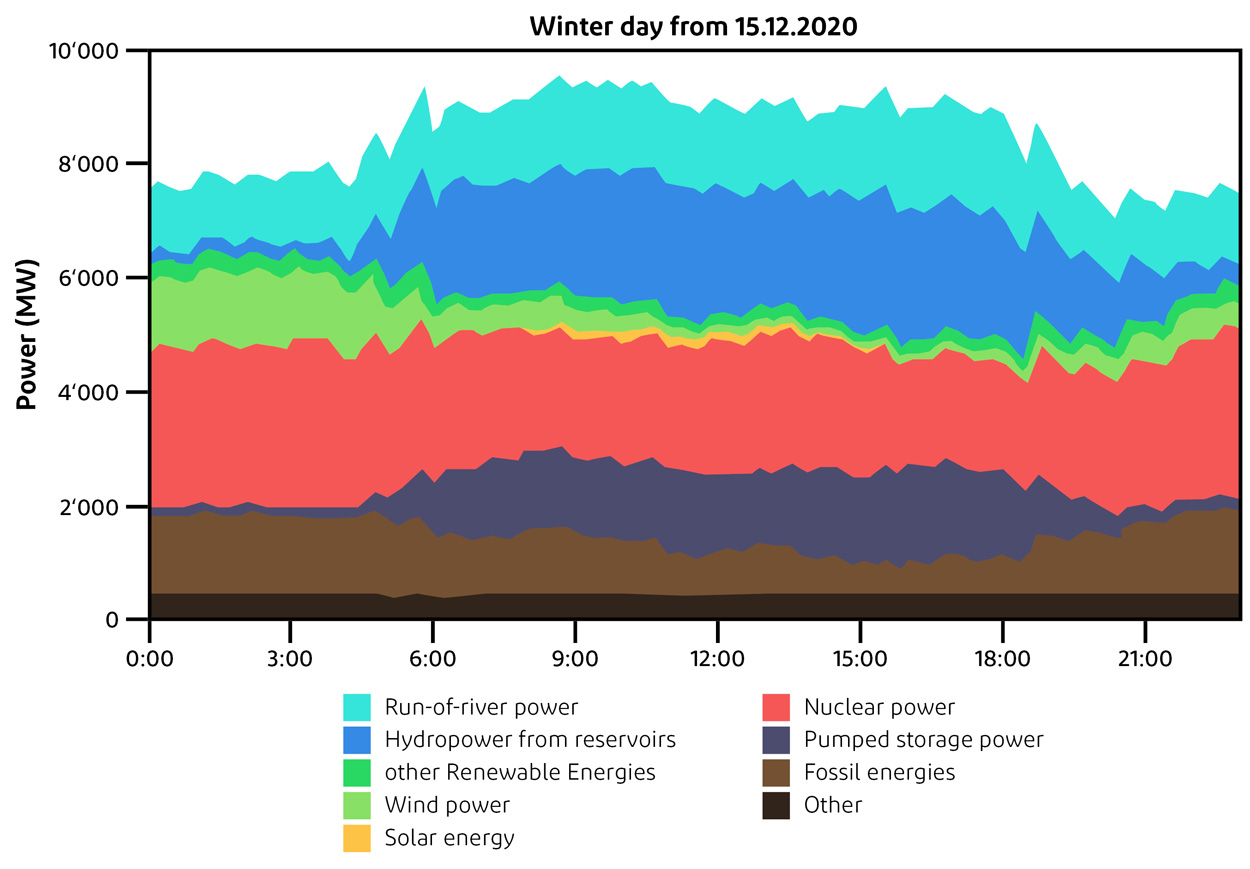The Swiss electricity mix: Low CO2 emissions in EU comparison
The energy transition is in full swing. Every year, more and more photovoltaic systems and battery storage systems are installed throughout the country. Swiss CO2 levels are low compared to neighbouring countries. But the Swiss electricity island is still plagued by the energy shortfall in winter. Production from renewable energies is not enough to get by entirely without buying electricity from abroad. And what we buy there is often anything but green electricity.
In summer, Switzerland is self-sufficient in electricity. In addition to solar and wind energy, hydroelectric power plants ensure a good CO2 eco-balance with a consistently high share of renewable energies - even in winter. But let's take a closer look at all this.
Thanks to nature: Water in abundance
Unlike many other countries, Switzerland has a naturally high share of renewable energies due to its abundance of hydropower. In the 1970s, almost 90% of electricity production came from hydropower. In 2020, the 677 hydroelectric power stations produced an average of 36.7 terawatt hours of electricity. Of the mix, 48.7% came from run-of-river power plants, 47% from storage power plants and 4.3% from pumped storage power plants. 63% of the electricity comes from the mountain cantons of Uri, Graubünden, Ticino and Valais. [1]
Storage power plants channel water from the higher-lying reservoirs through turbines into the valley when needed, thereby generating electricity. This power is more available in summer due to rain. Switzerland also has no shortage of rivers. Here, run-of-river power plants channel the water dammed by weirs into turbines to generate green electricity.
Principle of a pumped storage power plant (German video)
(Source: Schluchseewerk AG [2])
Pumped storage power plants can be operated well in summer from surplus solar or wind energy, but in winter, unfortunately, the storage facilities often have to be supplied from other sources. They also often serve as energy surplus compensation in case of overproduction from nuclear power plants. Because the energy to pump up the water comes from different energy sources, pumped storage power plants do not count as renewable energies.
The dark side: Rain, fog, snow
Green Alps, green valleys – it is so wonderfully green, dear Switzerland. Water makes this possible. But all that water has to come from somewhere. So rain, fog and snow prevent the generation of energy from solar plants on less beautiful days – especially in winter, when the days are shorter and the angle of sunlight is flatter, solar production is reduced. If there is snow on the roofs, nothing works. This is generally a problem of renewable energy: it is not constantly available, but weather-dependent.
Wind energy behaves somewhat differently. It is generally stronger in winter, and bad weather is usually associated with more wind. With almost 60 wind turbines, including seven large wind farms, Switzerland produced about 87 MWh in 2020, but only covered 0.2% of Switzerland's electricity demand. [3]
Concentrated power of fission
Switzerland's second major source of energy is nuclear power, although here not only is uranium split, but opinions among fellow citizens also differ widely on the subject. In any case, the phase-out of nuclear power has been a done deal since 25 May 2011 and the last reactor is scheduled to go off the grid in 2034. With the commissioning of Swiss nuclear power plants since 1969, the share of hydroelectric power fell to 60% by 1985 and was 58% in 2020 [5]. How these annual 870,000 MWh (2020) of the four Swiss nuclear power plants are to be produced without them has not yet really been clarified.
Import and export: A mishmash of energy
Let's take a look at the Swiss electricity mix for a whole year. The rapid increase in fossil energy in the cold months is clearly visible. Since Switzerland has only very few small conventional power plants (cement burning plant, waste incineration, etc.) with a vanishingly small production capacity, this energy has to come from somewhere else: from other European countries.

Swiss electricity mix 2020 (Data source: www.aliunid.com)
The reason is that consumption increases in winter. However, the energy Switzerland produces itself is not enough – there is talk of the so-called "winter power shortage". So electricity is imported from the neighbouring countries of Germany, Italy, France and Austria. The imported energy corresponds to the country's electricity mix exactly at that time. Since the share of fossil energy generation via coal or gas-fired power plants is much higher in the EU area, Switzerland indirectly imports this CO2-polluting energy. In the same breath, Switzerland also exports its electricity mix, which is CO2-friendlier than the imported electricity. One might ask why this is done at all. The answer is: this is the way to keep each other's grids stable, distribute surpluses and plug increased demand holes (such as the Swiss winter electricity hole).
Summer and winter: Two extremes in the electricity mix
It is clear that we consume less energy in summer than in winter, and we also consume less at night than during the day. This results in two exemplary daily patterns and four electricity mix pictures. If you look at them more closely, you can see two very different ratios in the electricity compositions.
An up-to-the-minute Swiss electricity mix can be found at: www.aliunid.com/strommix/
It can be clearly seen that there is sufficient solar energy in summer and almost zero in winter. Here, too, the import of fossil energy from the foreign electricity mix is clearly visible. In our exemplary winter night, the fossil share even rises to almost 20% and is the second largest energy source next to the main supplier, nuclear power (38%). And this CO2-heavy electricity is also bought at a high price. [4]
Conclusion: What do we learn from this?
Save energy in winter wherever possible! Switching off energy-consuming battery storage systems that are superfluous in winter months can make a contribution here (see article "Hibernation"). But lighting systems or street lamps that burn all night should also stop wasting energy. There are so many things that consume energy unnecessarily at night. It is up to each and every one of us to make a personal contribution to reducing the costly fossil fuel imports of electricity from abroad that pollute the atmosphere with CO2.
List of sources (German only)
[1] https://de.wikipedia.org/wiki/Elektrizit%C3%A4tswirtschaft_in_der_Schweiz
[2] https://www.planet-schule.de/frage-trifft-antwort/video/detail/wie-funktioniert-ein-pumpspeicherkraftwerk.html
[3] https://de.wikipedia.org/wiki/Liste_von_Windkraftanlagen_in_der_Schweiz
[4] A big thank you to www.aliunid.com for the data provided
[5] https://de.wikipedia.org/wiki/Liste_der_Kernreaktoren_in_der_Schweiz




